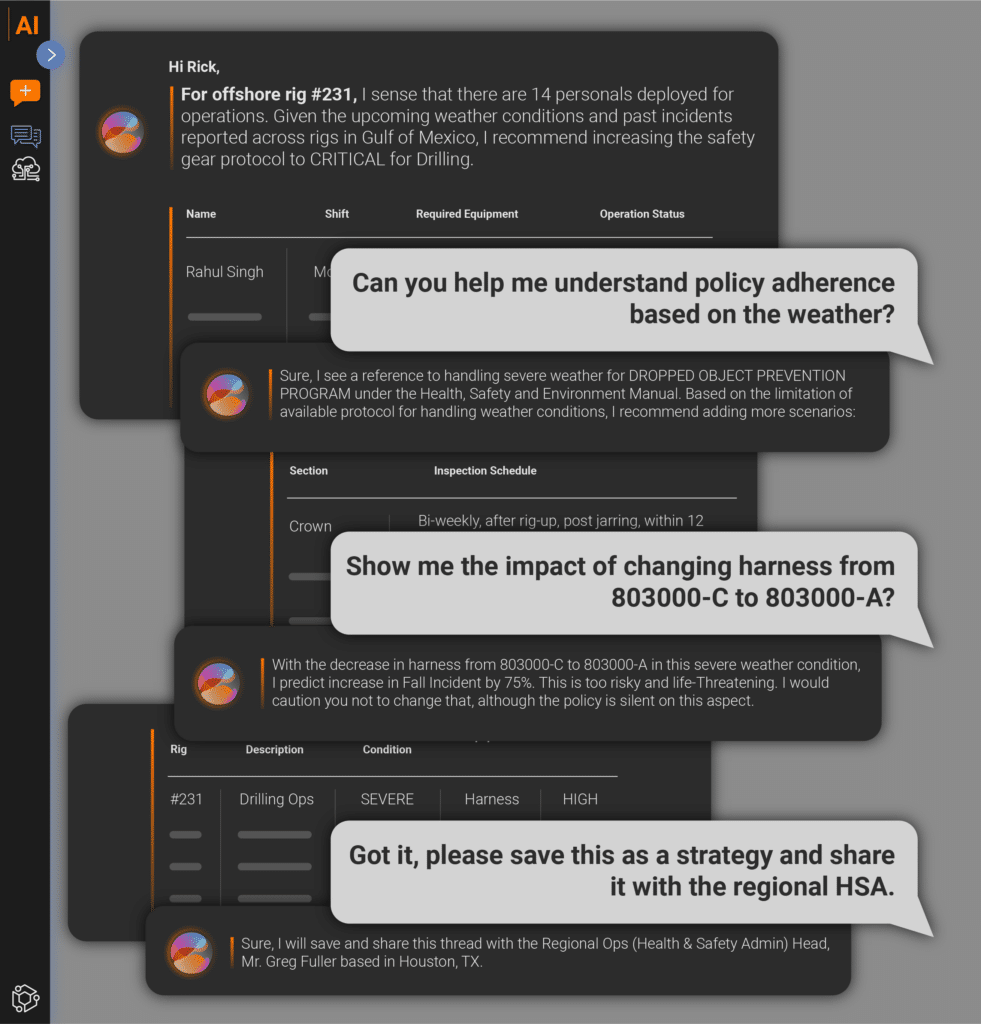Unlock the potential of all your dashboards and analytics assets with GenAI
Integrate seamlessly with dashboards or raw data to automatically generate insights, uncover patterns and trends, and to interact with data in natural language. Leveraging LLMs your own enterprise data means that data storytelling and ML consumption is now contextual to each business user.

Multiply your ETL/ELT productivity with GenAI
Coding data extraction and transformation scripts now takes a fraction of the time with AI generating SQL code as part of the data engineering process and integration testing can be automated instantly.
Imagine the impact if all business users, analysts, and engineers could code queries on any Database in plain English.
Unlock monumental data ROI from day one, as complex SQL queries for any data structure can be instantly generated and translated for analysts, significantly boosting productivity for engineers.

Maximize Speed to Value: Automate Data Standardization On The Fly, Outside Your Data Stores.
On average, business spends 30% of their day looking for information and IT spends more than 50%. Simply being able to query data regardless of structure unlocks monumental ROI on day one.
Secure Integration: Leverage LLM APIs Without Sacrificing Data Protection.
Trust the data experts for proper access control and proven security frameworks to connect LLM APIs with synonymous, encrypted data to ensure users access the right data in their own business context.

Modeling techniques are being commoditized, new tools and capabilities are appearing faster than ever, compute and model costs are decreasing exponentially…
Your data remains your competitive advantage
How will generative AI contribute business value?
Gartner identifies three categories of opportunities for generative AI:
Revenue Opportunities:
- Product Development: Generative AI accelerates the creation of new products, including drugs, cleaners, flavors, alloys, and diagnostics.
- New Revenue Channels: AI-mature enterprises see increased revenue benefits.
Cost and Productivity Opportunities:
- Worker Augmentation: Generative AI enhances content creation, summarization, code generation, and chatbot performance at scale.
- Long-term Talent Optimization: AI collaboration extends employees’ capabilities, accelerating proficiency.
- Process Improvement: Generative AI unlocks value from untapped content stores, transforming workflows.
Risk Opportunities:
- Risk Mitigation: Generative AI improves risk identification through deeper data analysis, enhancing pattern recognition.
- Sustainability: Generative AI aids in sustainability compliance, risk reduction, and embedding sustainability in decision making and product design.
What are some practical uses of generative AI?
Generative AI has numerous practical applications across various industries. Some notable uses include:
Content Generation: Generative AI can create content for marketing, advertising, and entertainment. It can produce text, images, videos, and music, reducing the need for human content creation.
Image and Video Editing: Tools like deepfake generators and image enhancers use generative AI to manipulate and enhance images and videos for creative and professional purposes.
Text Summarization: It can automatically summarize lengthy documents, making it useful for information retrieval and content curation.
Chatbots and Virtual Assistants: Generative AI powers chatbots and virtual assistants, enabling natural language interactions for customer support and information retrieval.
Drug Discovery: In the pharmaceutical industry, generative AI is employed to design and discover new drug compounds, potentially accelerating drug development.
Code Generation: It can auto-generate code for specific tasks, speeding up software development and reducing human coding errors.
Anomaly Detection: Generative AI can detect anomalies in data, making it useful for fraud detection, quality control, and cybersecurity.
Generative Adversarial Networks (GANs): GANs are a subset of generative AI used for creating realistic fake images or videos for special effects, design, and research.
Recommendation Systems: Generative AI can improve recommendation engines by creating personalized content suggestions for users based on their preferences and behaviors.
Sentiment Analysis: Generative AI can analyze social media and customer reviews to gauge sentiment, helping businesses understand public opinion.
Data Augmentation: It’s used to generate additional training data for machine learning models, improving their performance.
Medical Image Analysis: It can help with the interpretation and analysis of medical images, aiding in diagnosis and treatment planning.
These are just a few examples of the practical uses of generative AI, and the technology continues to evolve, expanding its applications across various domains.



